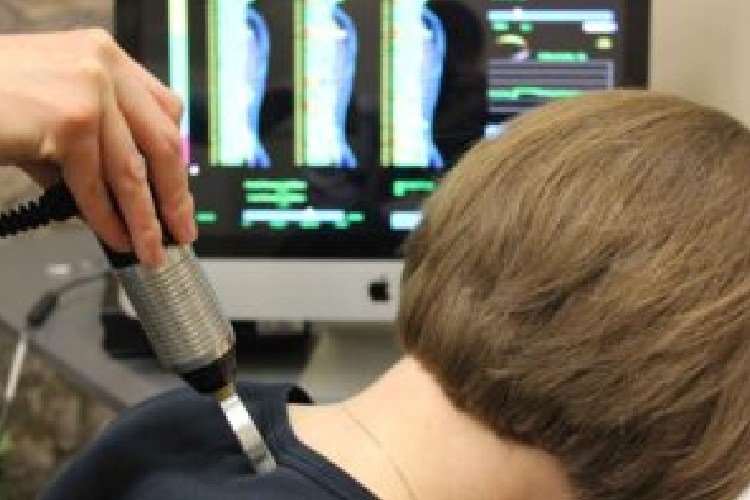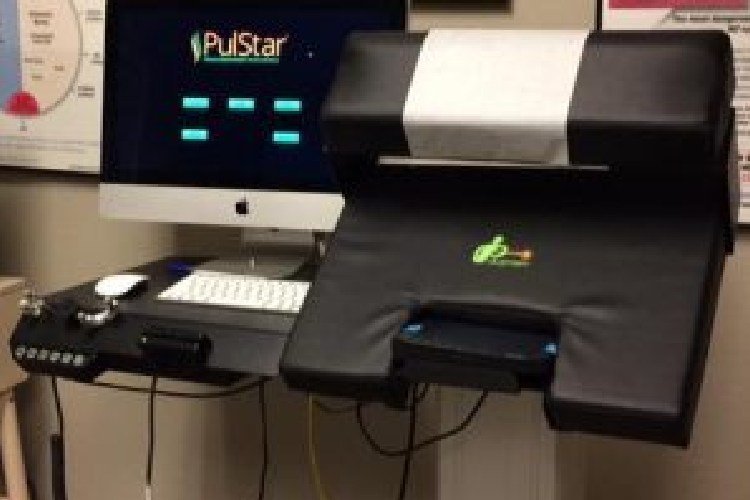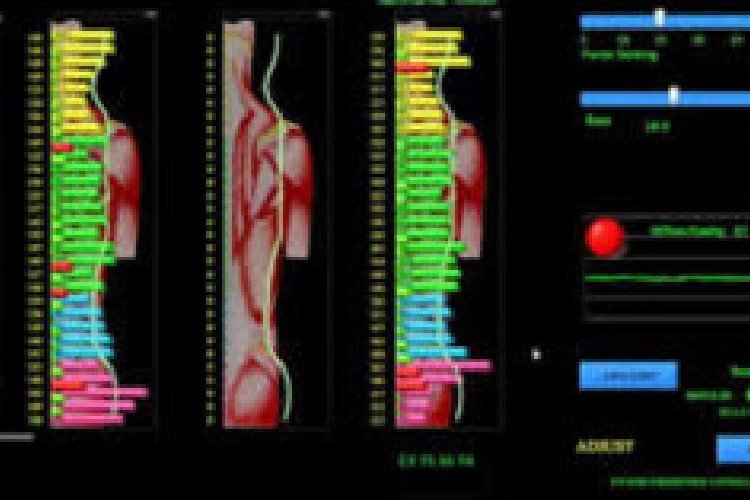


DIGITAL CHIROPRACTIC SPINAL ADJUSTMENT DEVICE
PULSTAR
The PulStar instrument is a computerized handheld device used for analyzing and adjusting a patient’s spinal fixations and misalignments. As the doctor guides the tool gently down the spine, it evaluates areas of the spine that are not moving correctly. If you are suffering from back pain, you’re not alone— about 80 percent of adults in the U.S. report experiencing back pain at some point in their lives, and many of them never seek treatment. Yet in today’s chiropractic world, multiple impulse technology offers a gentle solution that leaves patients pain-free in a fraction of the time without the twisting, popping and cracking of traditional chiropractic methods. In fact, chiropractors are finding that multiple impulse therapy tools such as the PulStar can effectively treat pain from musculoskeletal misalignments anywhere on the body— not just in the back.
Impulse-Digital Spine Analysis device is unique in preciseness in targeting spinal segments and renders impulses over the vertebrae with the help of a hand-held device. The variable adjustments modes controlled by a software program provide kinetic impulses at the targeted vertebrae at controlled speed, rate, and frequency with precision difficult to achieve manually. During the treatment mode, the instrument delivers highly-controlled impulses and the sensors analyse the tissue response to each impulse and modulates the frequency to maximize tissue response and release vertebral fixations for faster and accurate pain relief.
The Differential Software Analysis and Therapeutic Program is a sophisticated computer application that works with information provided by the sensor-based PulStar impulse head to:
- Analyze the spinal stiffness of the patient.
- Display the variations in stiffness along the spine.
- Select levels of increased stiffness for release of fixations in targeted spinal segments.
- Observe the response to a multiple impulse adjustment as it happens, in real time.
- Analyze spinal stiffness immediately after the adjustment.
- Display the response to the adjustment, for both the clinician and the patient.
- Record patient information and adjustment data on each visit.
- Review patient progress over time.
- Print out patient records.
Impulse IQ Instrument Adjusting is the latest computerized adjustment tool that provides adjusting impulses to adjust and correct the fixated joint and other surroundings structure which is out of alignment and causing pain and inflammation.



CONVENTIONAL MANUAL CHIROPRACTIC
This is one of the alternative medicine practices which promotes a “non-drug and non-surgical” treatment by reducing interference on the nervous system and therefore “promote healing.” This healthcare system believes in a theory that the structure of the body, mainly the spine, is essential for the general functioning of the body. It is aimed at correcting the spine alignment, alleviating pain, and promote healing of the entire body through spinal adjustments/manipulation. The term ‘adjustment’ implies treatment of the ‘spinal subluxation complex’ with the intent to manage or prevent conditions known or unknown in any system of the body. Most chiropractors, to varying degrees, subscribe to the theory of the ‘spinal subluxation complex’, which is a concept unique to chiropractors as compared to other conventional medical and manual medicine practitioners. This “subluxation theory“ asserts that the subluxation of a vertebra actively alters neurological function, which, if left untreated, will lead to disorders and disease of the various organ systems.
With the advancement in the care of manual medicine, the use of physical medicine and rehabilitation agents such as heat, cold, water, massage, light, and exercise are some of the physiological therapeutic measures that are often utilized by chiropractors. These elements exert a beneficial influence on body functions and can help some common lower back pain problems.
Chiropractors may provide patients with instructions for an exercise program focusing on stretching and strengthening the back.
PRE-CONSULTATION SPINAL MANIPULATION GUIDELINES AT THE STANCE
To ensure the safety of the patients, a proper health screening and patient history are taken at different levels to rule out contraindications, and the patients are advised to disclose any pre-existing medical condition at the time of registration.
Our osteopathic manipulative adjustments and chiropractic-type-adjustments and are focused primarily on spine and joints causing musculoskeletal pain and joint pain. More commonly treated conditions are NECK PAIN, LOWER BACK PAIN, REFERRED PAIN, HEADACHES, and MIGRAINES. Other types of joints manipulation are performed on patients suffering from SHOULDER PAIN, KNEE PAIN, HIP PAIN, ANKLE and FOOT PAIN. Spinal manipulation typically is followed by an audible “crack or pop “sound.
All our manual medicine procedures are performed after the patient meets the safety guidelines and his/her condition permits the spinal manipulation. If the patients are found to be medically not safe for spinal manipulations, then other forms of treatments such as Intervention Medicine, as well as PULSTAR- DIGITAL SPINE CORRECTION, or other forms of Osteopathic Approach is implemented to get the desired benefit. This approach helps the patients to explore and benefit from an Integrated Pain Clinic and gives the patient an option to select a treatment that is best suited for their condition.
References:
https://www.spine-health.com/treatment/chiropractic/chiropractic-services-beyond-adjustments
https://www.mentalhelp.net/alternative-medicine/chiropractic-care/
https://jamanetwork.com/journals/jamainternalmedicine/fullarticle/210354
"Our approach has not only simplified the treatments but it also actively involves the patients to recover by our very simplified, yet very dynamic treatment protocols."
Click to chat